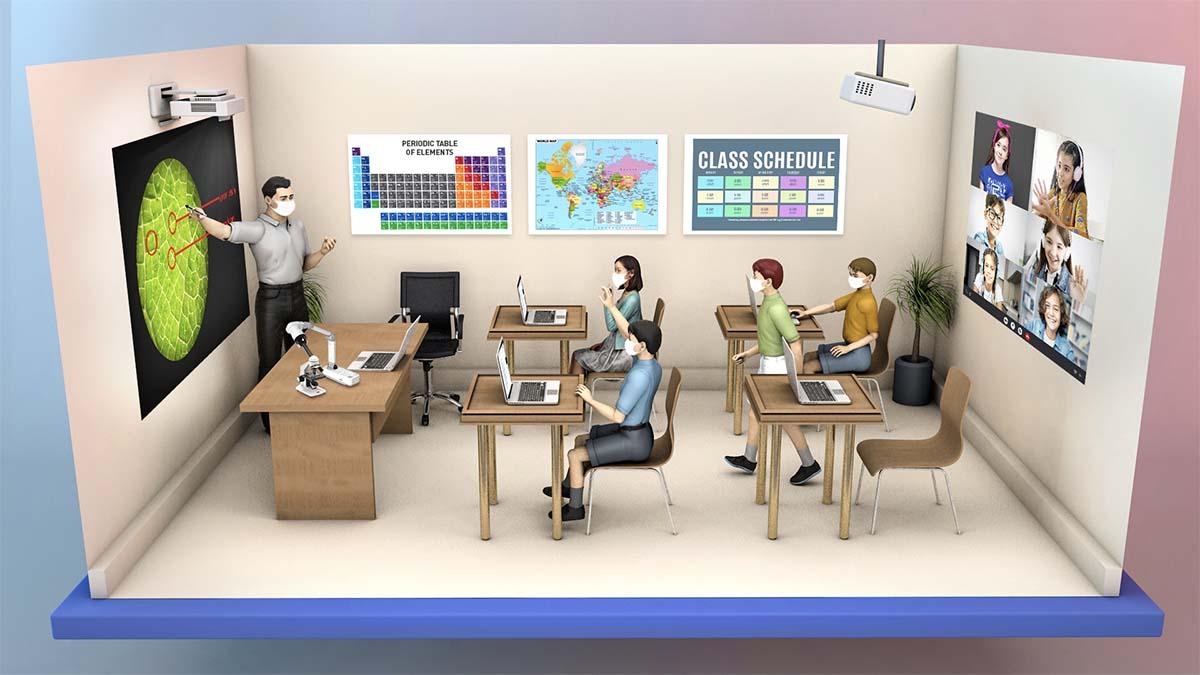Hybrid Classrooms: Expert Strategies for Flexible Learning Design
In today’s rapidly evolving educational landscape, hybrid classrooms have emerged as a transformative model for enabling flexible learning design. By seamlessly blending in-person and online modalities, educators can meet diverse student needs, increase accessibility, and promote dynamic learning experiences. Weather you’re an instructional designer, educator, or school administrator, understanding how to craft effective hybrid environments has become essential. In this in-depth article, we’ll explore the benefits, expert strategies, and practical examples to help you build a robust hybrid classroom for flexible learning.
Understanding Hybrid Classrooms
A hybrid classroom combines traditional face-to-face instruction with virtual learning strategies. This blended model encourages student engagement, caters to varied learning preferences, and increases accessibility. With advancements in EdTech and widespread digital infrastructure, hybrid classrooms are now easier to implement, offering synchronous and asynchronous learning opportunities.
- Synchronous Learning: Students participate in real-time, whether on-site or online.
- Asynchronous Learning: Students learn at their own pace through digital resources, video lectures, or collaborative platforms.
Benefits of Hybrid Classrooms for Flexible Learning
Adopting a hybrid classroom approach provides significant advantages over traditional methods:
- Personalized Learning Paths: Hybrid environments enable students to pursue tailored educational experiences, accommodating diverse learning styles.
- Increased Accessibility: Remote learners, including those with geographical or scheduling constraints, are empowered to participate fully.
- Enhanced Engagement: Interactive technology tools,discussion forums,and multimedia resources foster deeper collaboration and participation.
- Scalability: Schools and educators can reach more learners than ever before,scaling instruction efficiently and cost-effectively.
- Resilience to disruption: Flexible designs keep education uninterrupted during emergencies (e.g., pandemics, natural disasters).
Expert Strategies for Effective Hybrid Classroom Design
building a successful flexible learning environment requires thoughtful planning and the integration of strategic instructional practices. Here are expert-backed tactics to optimize your hybrid classroom:
1. Define Clear Learning Objectives
- Start with measurable outcomes to guide all aspects of lesson planning.
- Align objectives with curricular standards and the skills students need for future success.
2. Combine Synchronous and Asynchronous Elements
- Leverage live lectures for interaction,real-time Q&A,and collaborative exercises.
- Offer recorded sessions,reading materials,and self-paced assignments to personalize learning.
3. Leverage Technology for Engagement
- Use robust learning management systems (LMS) to organize resources and track progress.
- Incorporate interactive tools: polls, quizzes, breakout rooms, and multimedia content.
- Apply collaborative platforms (e.g., Google Workspace, Microsoft Teams) for teamwork and interaction.
4. Foster Community and Inclusiveness
- Design activities that connect remote and in-person learners, such as group projects and online discussions.
- Institute regular check-ins and feedback sessions to encourage a supportive learning community.
5. Establish Consistent Communication Channels
- Set clear expectations for participation, assignments, and etiquette.
- Communicate frequently via emails, announcements, and direct messaging.
- Provide prompt feedback to sustain motivation and progress.
6. Ensure Accessibility and Equity
- Design your course with universal design for learning (UDL) principles to support all learners.
- Ensure digital materials are ADA-compliant and offer alternatives (transcripts, captions, printable versions).
7. Assess and Iterate Continuously
- Gather data through surveys, analytics, and classroom observation.
- Tweak strategies based on learner feedback and evidence of outcomes.
Practical Tips for Hybrid Classroom Implementation
Here are actionable steps to get started with your own hybrid classroom setup:
- Plan Technology Infrastructure: Ensure all students have reliable access to devices and internet connectivity.
- Create Structured Schedules: Balance on-site and online workflows, setting consistent meeting times.
- Offer Training: Conduct professional development sessions for educators on hybrid pedagogy and technology tools.
- Prepare Physical/Classroom Space: Equip rooms with cameras, microphones, and screens for seamless hybrid interactions.
Case Studies: Successful Hybrid Learning in Action
Case Study 1: Secondary School Transformation
A high school in Texas transitioned to a hybrid classroom model in 2023, allowing students to choose between in-person and virtual attendance for core subjects. teachers used LMS platforms to distribute materials and host interactive forums. Outcomes included:
- Improved test scores for remote learners who benefited from self-paced modules.
- Higher engagement in multidisciplinary projects, as technology facilitated cross-class collaboration.
- Reduced absenteeism thanks to flexible attendance policies and recorded sessions.
Case Study 2: Postsecondary Success
At a large university, hybrid design enabled international and working students to access courses from anywhere, with regular online discussions and in-person group labs. Noted results:
- Increased retention rates for students balancing jobs and studies.
- Richer diversity in peer interactions and academic contributions.
- Faculty reported higher satisfaction with flexible course planning.
First-Hand experience From Educators
Numerous educators have shared positive experiences regarding hybrid classrooms:
“Hybrid learning has truly empowered my students to take ownership of their education. The flexibility lets them engage deeply, ask questions, and collaborate in ways not possible before.”
– Lisa M., Middle School Teacher
“Implementing hybrid strategies meant rethinking how I assess, connect, and support students. The shift is challenging, but the rewards are evident in student growth and enthusiasm.”
– David A., College Instructor
WordPress CSS Tips for Hybrid Classroom Articles
If you want your hybrid classroom content to stand out on WordPress, consider applying custom CSS styling:
/* Highlight key sections */
h2 {
color: #1976d2;
font-weight: bold;
}
blockquote {
border-left: 3px solid #009688;
background: #fafafa;
padding: 15px;
font-style: italic;
margin: 20px 0;
}
ul {
margin-left: 20px;
padding-left: 20px;
}
Use styles to emphasize headings, tips, and educator quotes, improving readability and SEO strength.
conclusion: Building Flexible, High-impact Hybrid Classrooms
Hybrid classrooms represent the future of education, combining the best aspects of in-person and online learning. By incorporating strategic flexible learning design, leveraging technology, and cultivating inclusive practices, educators can ensure every learner thrives.Start small, iterate often, and listen to both student and teacher feedback to optimize your hybrid approach.
Ready to take the next step? Implement these expert strategies to create high-impact hybrid classrooms, empower flexible learning, and unlock new possibilities for your educational community.

